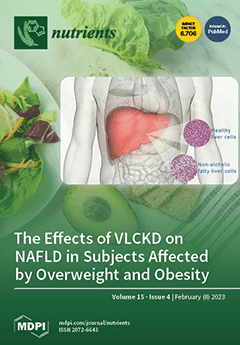Background: There has been an emerging concern that non-nutritive sweeteners (NNS) can increase the risk of cardiometabolic disease. Much of the attention has focused on acute metabolic and endocrine responses to NNS. To examine whether these mechanisms are operational under real-world scenarios, we conducted a systematic review and network meta-analysis of acute trials comparing the effects of non-nutritive sweetened beverages (NNS beverages) with water and sugar-sweetened beverages (SSBs) in humans.
Methods: MEDLINE, EMBASE, and The Cochrane Library were searched through to January 15, 2022. We included acute, single-exposure, randomized, and non-randomized, clinical trials in humans, regardless of health status. Three patterns of intake were examined: (1) uncoupling interventions, where NNS beverages were consumed alone without added energy or nutrients; (2) coupling interventions, where NNS beverages were consumed together with added energy and nutrients as carbohydrates; and (3) delayed coupling interventions, where NNS beverages were consumed as a preload prior to added energy and nutrients as carbohydrates. The primary outcome was a 2 h incremental area under the curve (iAUC) for blood glucose concentration. Secondary outcomes included 2 h iAUC for insulin, glucagon-like peptide 1 (GLP-1), gastric inhibitory polypeptide (GIP), peptide YY (PYY), ghrelin, leptin, and glucagon concentrations. Network meta-analysis and confidence in the network meta-analysis (CINeMA) were conducted in R-studio and CINeMA, respectively.
Results: Thirty-six trials involving 472 predominantly healthy participants were included. Trials examined a variety of single NNS (acesulfame potassium, aspartame, cyclamate, saccharin, stevia, and sucralose) and NNS blends (acesulfame potassium + aspartame, acesulfame potassium + sucralose, acesulfame potassium + aspartame + cyclamate, and acesulfame potassium + aspartame + sucralose), along with matched water/unsweetened controls and SSBs sweetened with various caloric sugars (glucose, sucrose, and fructose). In uncoupling interventions, NNS beverages (single or blends) had no effect on postprandial glucose, insulin, GLP-1, GIP, PYY, ghrelin, and glucagon responses similar to water controls (generally, low to moderate confidence), whereas SSBs sweetened with caloric sugars (glucose and sucrose) increased postprandial glucose, insulin, GLP-1, and GIP responses with no differences in postprandial ghrelin and glucagon responses (generally, low to moderate confidence). In coupling and delayed coupling interventions, NNS beverages had no postprandial glucose and endocrine effects similar to controls (generally, low to moderate confidence).
Conclusions: The available evidence suggests that NNS beverages sweetened with single or blends of NNS have no acute metabolic and endocrine effects, similar to water. These findings provide support for NNS beverages as an alternative replacement strategy for SSBs in the acute postprandial setting.
Full article






